How to Network and File Sharing Between Windows 7 and Windows 10/11 in 2022
Can I Share Files Between Windows 7 and Windows 10/11
File sharing is not a difficult issue but also sticks unclear in someone's mind. Do you have a clue to share files between Windows 7 and Windows 10 computers? You will get all the useful methods to transfer files from Windows 7 to Windows 10 over network or without network on this page.
Here, we'll list the applicable methods from easy to difficult so as to save your time and energy. See the key part below:
| Workable Solutions | Step-by-step Troubleshooting |
|---|---|
| Fix 1. (Easiest) Use PC Transfer Software |
Download and install Qiling Disk Master on both PCs...Full steps |
| Fix 2. Use Network Share |
#1. Create Network Shared Link to Share Files...Full steps |
| Fix 3. Use OneDrive Shared Link | Go to Open the OneDrive on the source PC with Windows 7 or Windows 10...Full steps |
| Fix 4. Use Email | Step 1. Sign in with your email accounts on two PCs...Full steps |
| Bonus Tip. File Share without Network | If both Windows 7 and Windows 10 have no network connection, try fixes here...Full steps |
Applies to: Network and file sharing on all Windows OS like Windows 11/10/8.1/8/7/XP/Vista and Windows Severs.
Method 1. Network and File Sharing Between Windows 7 and Windows 10/11 via Free Transfer Software
Applies to: Share and transfer files, applications, programs, and games on all Windows OS.
The earlier the solutions appear, the easier they would be for you to apply and transfer files between Windows 7 and Windows 10/11.
The best available solution for network connecting and file sharing between Windows computers is turning to a third-party free PC transfer tool like Qiling Disk Master Free. This software supports sharing and transferring files, applications, programs, and games between two Windows computers like Windows 7 and Windows 10/11.
Qiling Disk Master is one of these tools that enables you to transfer multiple files from PC to PC for free in only 4 steps. See how to transfer your files from Windows 7 to Windows 10/11 or vice versa:
Step 1. Select the transfer mode.
- Download and install Qiling Disk Master on both PCs.
- Launch Qiling Disk Master on the PCs and click "File sync" on one of them.
- Make sure your PCs meet the requirements of a smooth transfer.

Step 2. Connect the PCs.
- Connect to the target PC, then input the account password or verification code of the target PC.
- Check the verification code on the target PC.
Step 3. Select the content you want to transfer.
- Hover on the category (Applications, Files, or Accounts) and select.
- Choose the specific items you want to transfer.
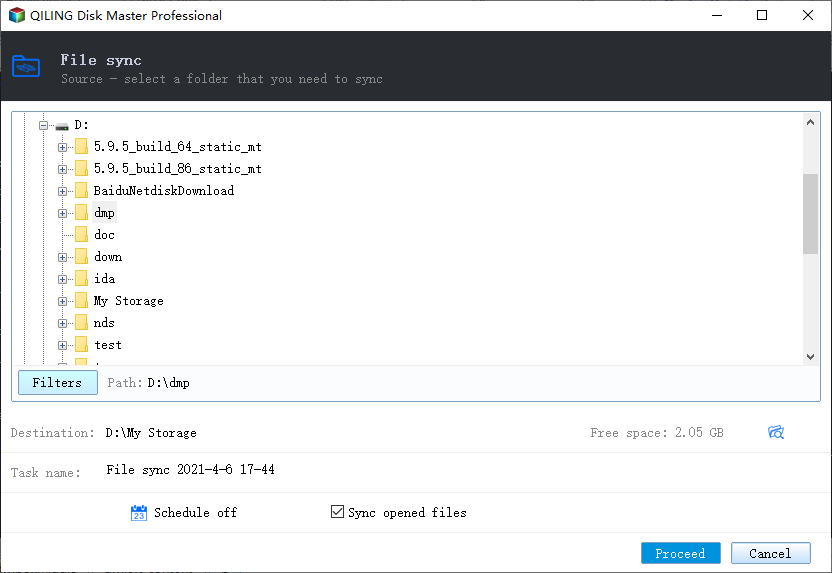
Step 4. Transfer selected items from Windows 7 to Windows 10.
- Click "Proceed" to start transferring applications, files, or accounts from Windows 7 to Windows 10.
- Wait for the transfer process to finish.
Besides, you can even use this software to migrate applications and user account from one computer to another in Windows 11/10/8.1/8/7/Vista/XP, such as "Move Dropbox to Another Computer". Read also:
How to Transfer Microsoft Office from One Laptop to Another
This page shows you how to transfer Microsoft Office 2010/2013/2016 application with its product key from one laptop to another with the help of Qiling PC Transfer software and Microsoft manual method.
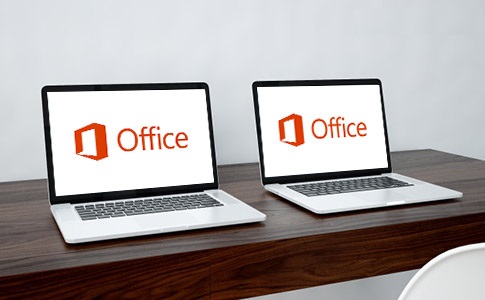
Method 2. Share Files Between Windows 7 and Windows 10/11 Via Network Share
Applies to: Share files between Windows PCs via Nearby Shre, HomeGroup/Network Shared Drives
Microsoft Windows also has offered some built-in tools that allow users to share files between Windows computers. Here are three major tools that you can apply to transfer files between Windows 7 and Windows 10/11:
- Tool 1 - Create Network Shared Link via Share/Share With
- Tool 2 - Use Windows HomeGroup
- Tool 3 - Map and Use Network Shared Drive
#1. Create Network Shared Link to Share Files Between Windows 7 & Windows 10/11 via Share/Share With
First, Turn on Network Discovery for File Sharing
Step 1. Open Network & Sharing Center and Change advanced sharing settings on the source PC
- 1. Right-click the Windows icon, click Search and type: network and sharing center, click to open it.
- 2. Click "Change advanced sharing settings", check the boxes below and save changes:
- Turn on network discovery
- Turn on file and printer sharing
- Turn on sharing so anyone with network access can read and write files in the public folders
- Turn off password protected sharing
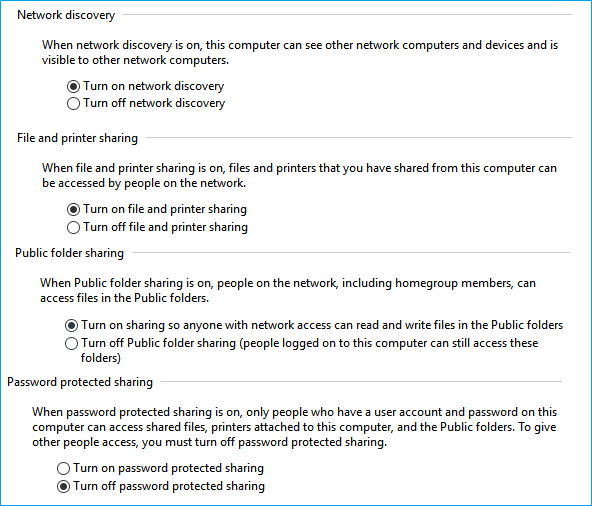
Step 2. Create a shared link for the files that you want to share
Next. Create a Network Shared Link on Source PC
From Windows 10 to Windows 7:
Step 1. Open drives in Windows 10 File Explorer and select files that you want to share with Windows 7.
Step 2. On the Windows File Explorer window, go to the Share tab at the top pane, click "Share" and select "Specific people...".
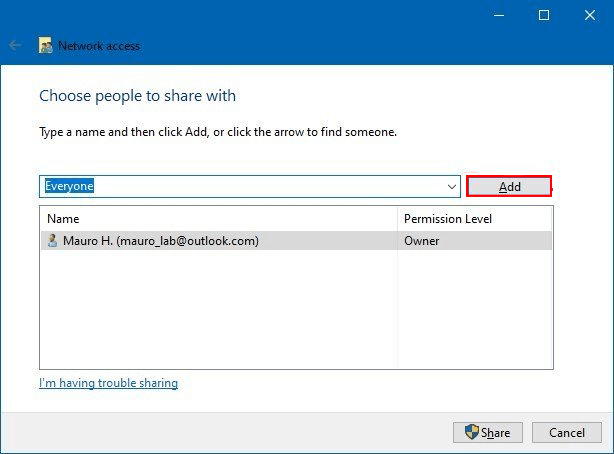
Step 3. Click the expand button and choose "Everyone" as the share mode, click "Add" to confirm.
Step 4. Click "Everyone", and specify the access privilege as "Read/Write" under the Permission Level. And click "Share" to confirm.
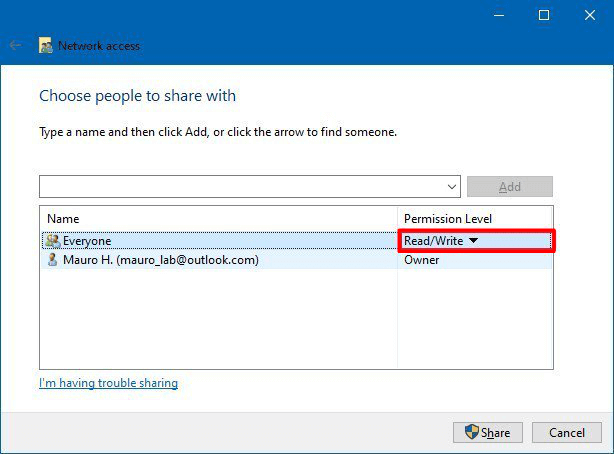
Step 5. Right-click the shared folder path and select "Copy Link" as shown below:
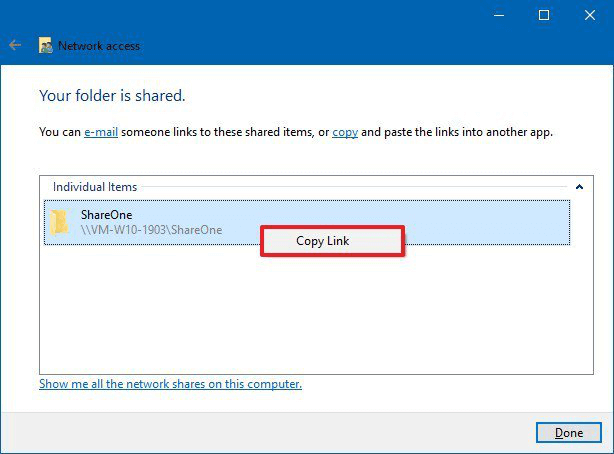
Step 6. Send the shared link to the target PC via Email or other ways.
From Windows 7 to Windows 10:
Step 1. Open drive or partition in Windows 7 Explorer, right-click on the folder or files that you want to share, and select "Share with" > Choose "Specific people...".
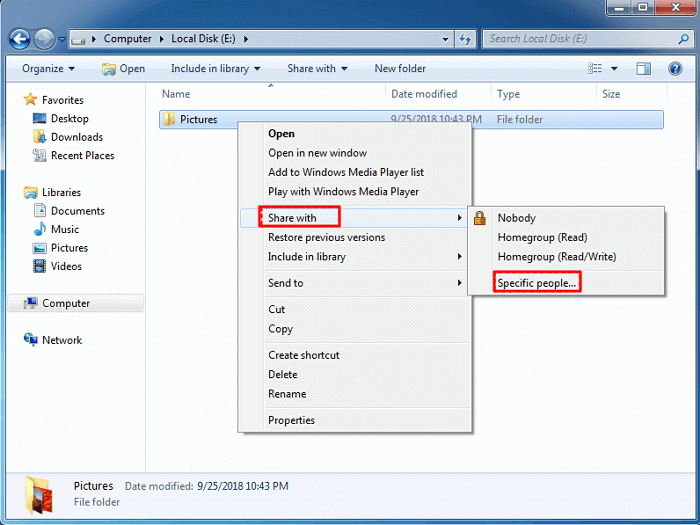
Step 2. Choose "Everyone" in the drop-down menu on File Sharing, click "Add" to confirm.
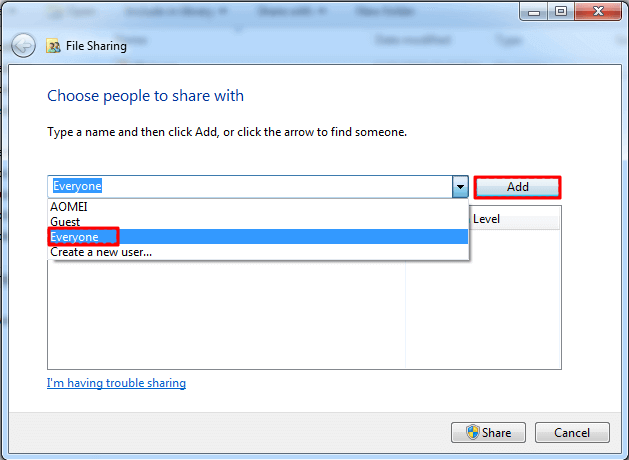
Step 3. Click "Everone" and set permissions to "Read/Write" and click "Share" to confirm.
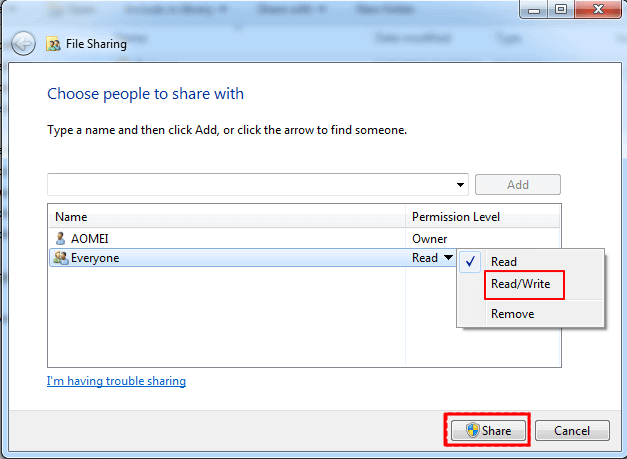
Step 4. Access shared files on target PC
Last. Restore Shared Files via Network Shared Link on Target PC
From Windows 10 to Windows 7:
Step 1. Open Windows 7 File Explorer, click "Network".
Step 2. Paste the shared link and hit enter to access the shared content.
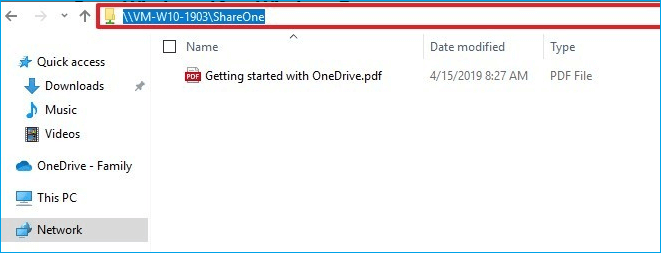
From Windows 7 to Windows 10:
Step 1. Open Windows 10 File Explorer and click "Network".
Step 2. Find the Windows 7 computer's name and double-click to open it, access the shared files.
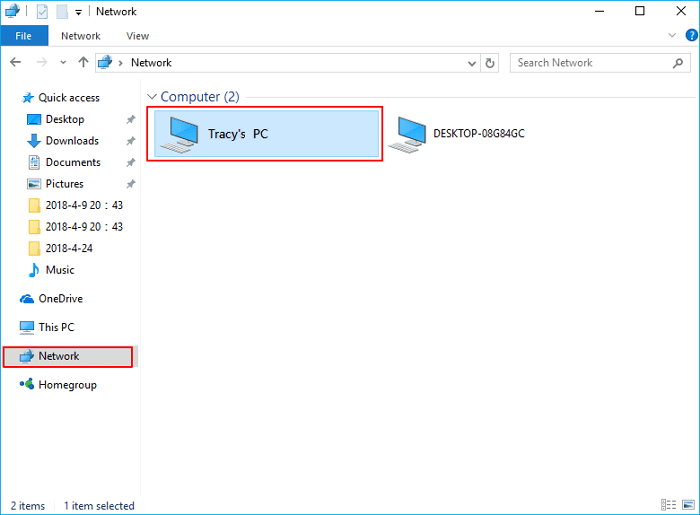
P.S. Suppose you face Windows 7 to Windows 10 network sharing not working issue, you can see a how-to article of Windows 10 file sharing not working.
Tool 2 - Use Windows HomeGroup to Share Files Between Windows 7 and Windows 10/11
HomeGroup is used to share files or folders between two Windows computers connected to the same network.
If your Windows OS stays in versions before 1803, you can use HomeGroup to share files between Windows 7 and Windows 10 with the below steps:
Step 1. On the Windows computer, type and search for a homegroup in the Search box. Click to open it.
Step 2. Choose "Create a homegroup" > "Next", and follow the instructions.
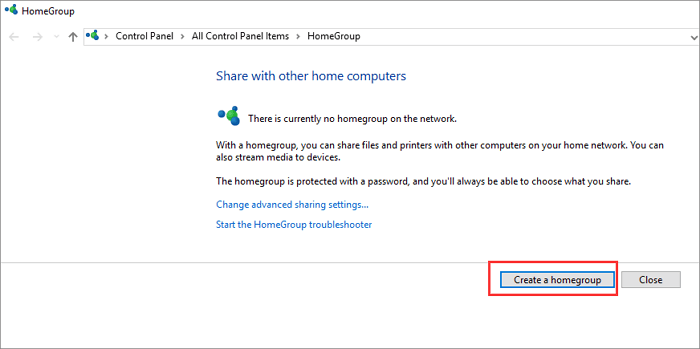
Step 3. Select files and folders that you want to share and switch the Permissions buttons to "Shared", and click "Next".
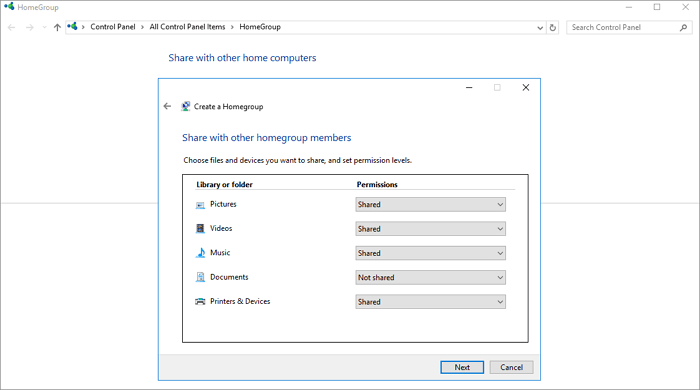
Note: Remember the password shown on-screen.
Step 4. Go to Windows 10 computer and open HomeGroup: Control Panel > All Control Panel Items > HomeGroup.
Step 5. Join the existing Homegroup and enter the password you got earlier and click "Finish".
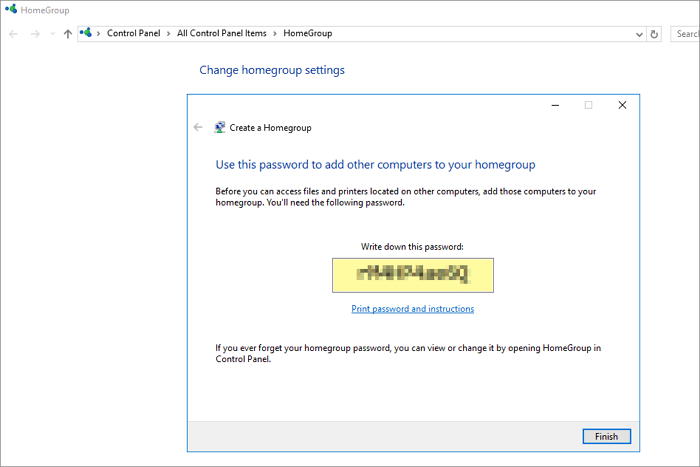
Step 6. Access the shared files on the new PC.
If you Windows 10 has been updated to the new versions after April 2018 Update (version 1803), use the Share option to accomplish file sharing between Windows 7 and Windows 10:
Step 1. Open File Explorer on Windows 7, select the folder or files that you want to share.
Step 2. Click the "Share" tab at the top panel, and click the "Share" button.
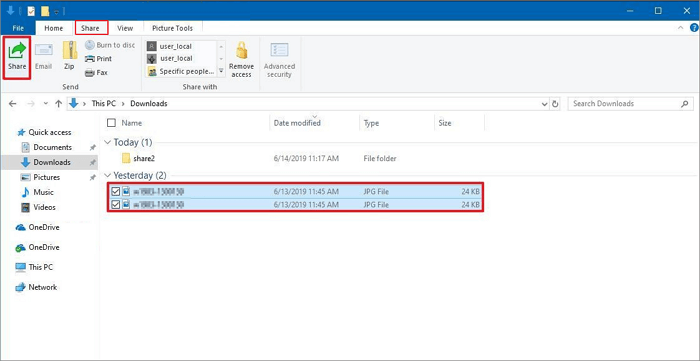
Step 3. Select a contact, nearby sharing device, or one of the Microsoft Store apps (such as Mail).
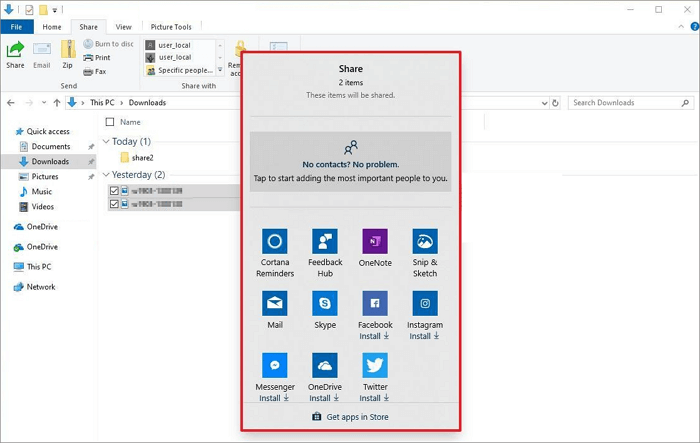
Step 4. Finish the process by following the on-screen directions to transfer files from Windows 7 to Windows 10.
Tool 3 - Map and Use Network Shared Drive on Both Two Computers for File Sharing
Tip: Both Windows 7 and Windows 10 must connect to the same network or LAN for sharing files via the network shared drive.
Step 1. Map a network drive on the source computer.
- 1. Right-click on This PC/Computer and select "Map network drive".
- 2. In the Drive box, click the drive letter you want to use.
Note: The drive should be big enough for saving the files and folders that you want to share.
- 3. In the Folder box, type \\server\share, where you can type the IP address of the drive to be mapped.
- For example, if the IP address is 192.168.6.xxx, you can type \\192.168.6.xxx.
- 4. Click "Finish".
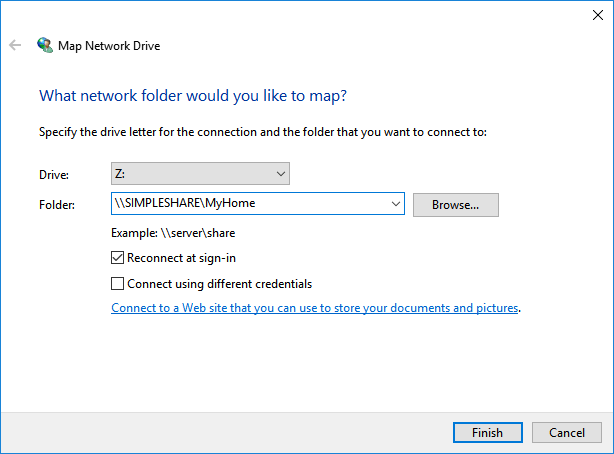
Step 2. Save files and folders to the mapped drive.
Step 3. One the target PC, open File Explorer and type the IP address of the mapped network drive, e.g: 192.168.6.xxx
Step 4. Hit Enter and access the shared files. You can copy and save the files to your local PC.
Method 3. Use OneDrive Link to Share Files Between Windows 7 and Windows 10/11
Applies to: File backup, File sharing on all Windows PCs
Cloud drive services also provide people with great convenience for file backup and file sharing in all Windows and Mac computers. There are many cloud services available online that you can choose to backup and share files, such as OneDrive, Dropbox, Google Drive, iCloud, etc.
Here we'll take OneDrive as an example to show you how to share files between Windows 7 and Windows 10/11:
Step 1. Go to Open the OneDrive on the source PC with Windows 7 or Windows 10/11.
Step 2. Right-click the file or folder that you want to share and select "Share a OneDrive link".
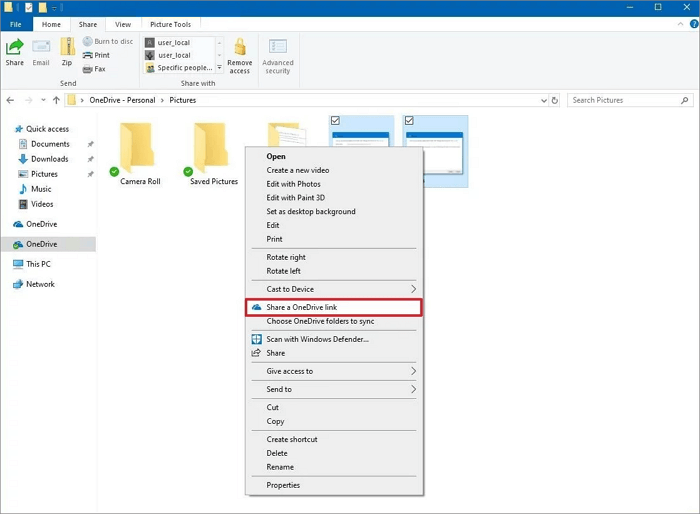
Step 3. Paste the link to share it on any email, social media post, or any other type of messaging system.
Step 4. Once you received the sent link on the target PC, you can access the shared files.
Method 4. Use Email to Share Files between Windows 7 and Windows 10/11 Computers
Applies to: Everyone who has an email account in all Windows OS.
The other applicable and practical way for file sharing is email. The reason is that almost everyone has an email account in their daily file and jobs. It's a common way to share files via emails is in ordinary people's life.
Required: Two email accounts offered by Outlook, Windows Email/Mail, Gmail, Mozilla Thunderbird or Hotmail, etc.
You can follow the steps below to share files between your two PCs:
Step 1. Sign in with your email accounts on two PCs.
Step 2. On the source computer, go to Index, input the email addresses
From: your email address on the source PC, To: email address on the target PC.
Step 3. Click the Attachment icon, select the files that you want to share on your current PC.
Step 4. Click "Send" to start sending files to the target PC.
Step 5. On the target PC, go to Inbox, check, and download the received attachment files.
Bonus Tips. Share Files Between Windows 7 and 10/11 without Network
Applies to: Share confidential files offline between Windows 7 and 10 without a network connection.
If you prefer an offline file sharing option between Windows 7 and Windows 10, you can use three provided methods here without using the network:
- #1. Manually Copy Files via External Storage Device
- #2. Use Qiling PCTransfer with Its Data Backup & Restore Feature
Method 1. Manually Copy Files via External Storage Device
Note: Be careful while copying and pasting files. Improper operation may result in unexpected file loss.
Step 1. Prepare a big enough empty external hard drive or USB drive.
Step 2. Connect the external storage drive to the source PC, copy, and save files and folders to the drive.
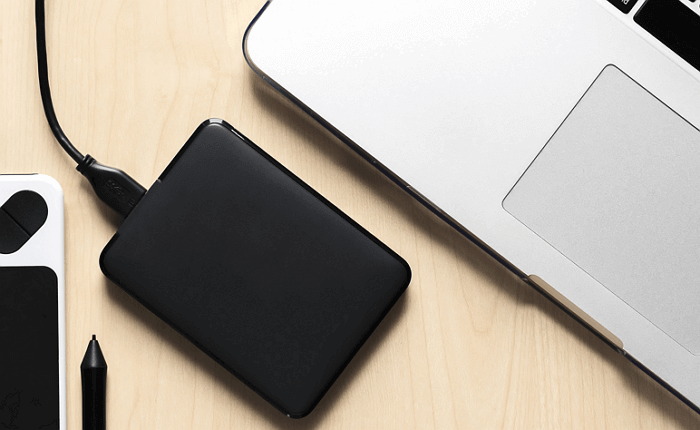
Step 3. Unplug the external device and connect it to the target PC, copy and save shared files to a local drive.
Method 2. Transfer Files via Image with Qiling PC Transfer Tool
The "Backup and Restore" Transfer feature in Qiling Disk Master allows you to create compressed backup files and folders and transfer them to the target PC at one time:
Step 1. Create a backup file to transfer
- Launch Qiling Disk Master on the source PC. Click "Backup & Restore" page and click "Start" to go on.
- Choose name the backup file, and set the external USB drive as the backup location.

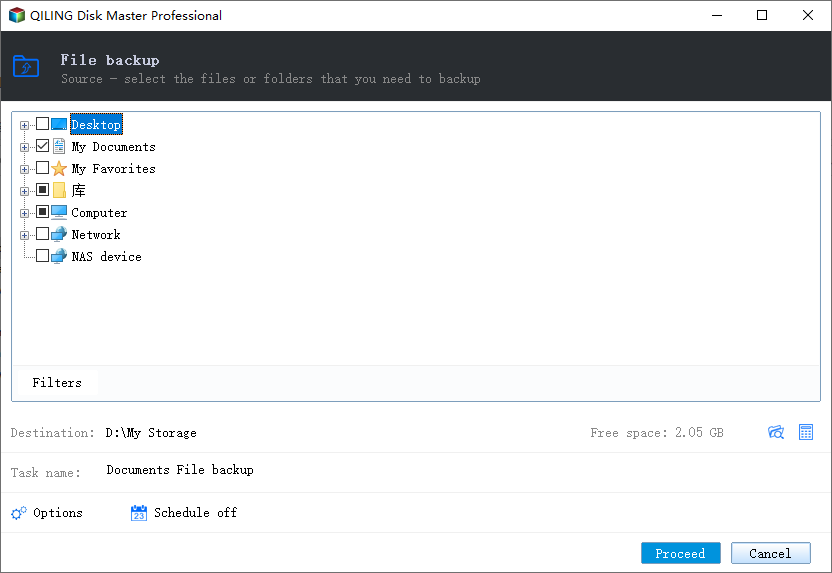
- Choose files. Then, click "Proceed" to wait for the process to complete.
When the creating process has completed, click "OK" to confirm. Safely eject the USB drive and connect it to the target PC. Move to recover the backup of files to the new PC using USB.
Step 2. Restore and transfer backup files to PC without network
- Connect the external USB drive with the file created from the source PC to the target PC. Launch PCTrans, click "Backup & Restore" > "Recovery".
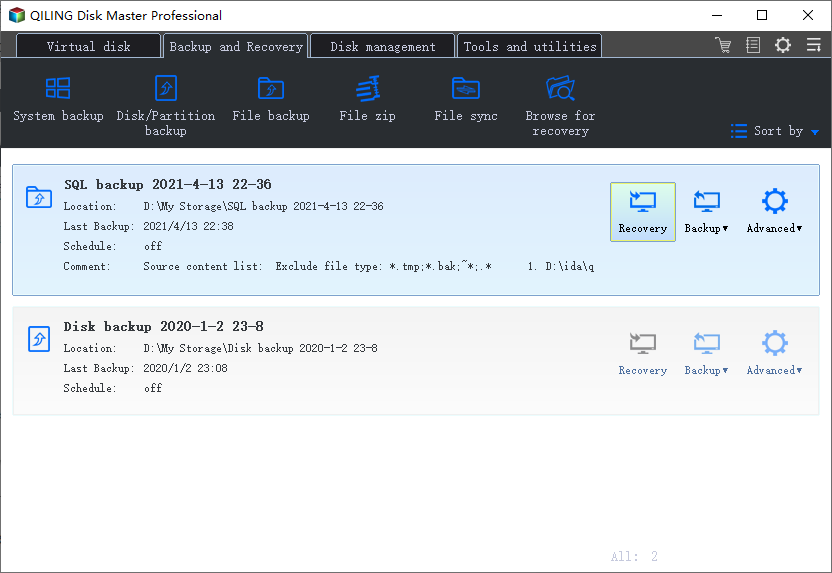
- Click "Browse for recovery" to find the image file in your USB drive. Then, choose the correct backup file and click "OK" to continue.
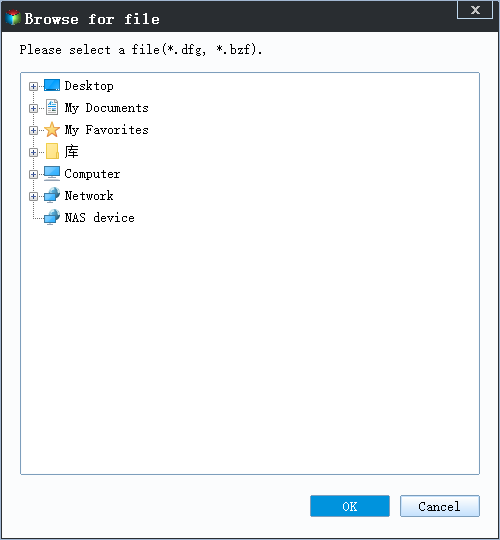
- Choose specific files and click "Restore".
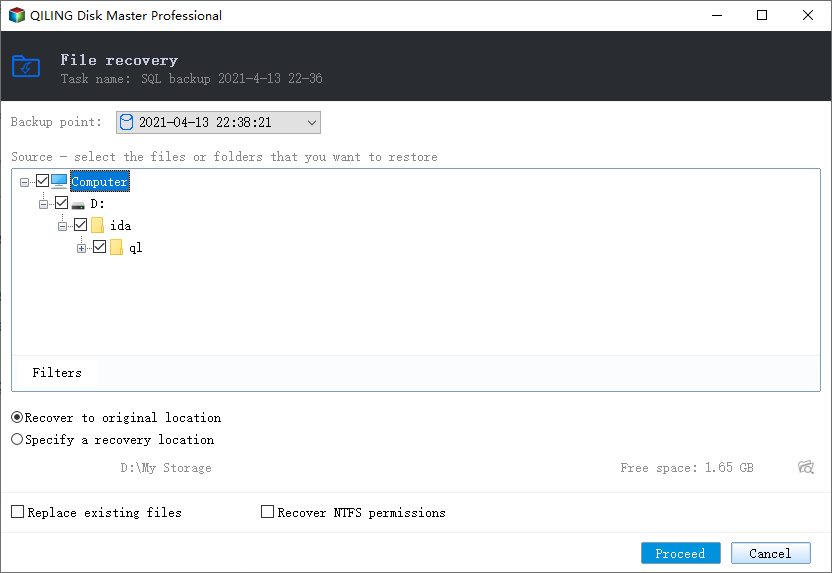
Easy, Quick, and Safe Fixes for File Sharing
On this page, we show you six methods in all to transfer files between Windows 7 and Windows 10/11.
For the easiest solution, Qiling Disk Master in Method 1 is the best one for all users. For manual guidelines, email, cloud drive, and network sharing are also practical ways. Your advice is important to us. Looking forward to your consultation!
Related Articles
- How to Transfer the Installed Programs, Data to a New Hard Drive
- How to Transfer Games to New Computer without Reinstallation [Steam/Epic/Origin/Uplay]
- Fast File Transfer Software for PC Free Download
- How to Copy MS Office from Laptop to Pen Drive/USB (Windows 11 Available)